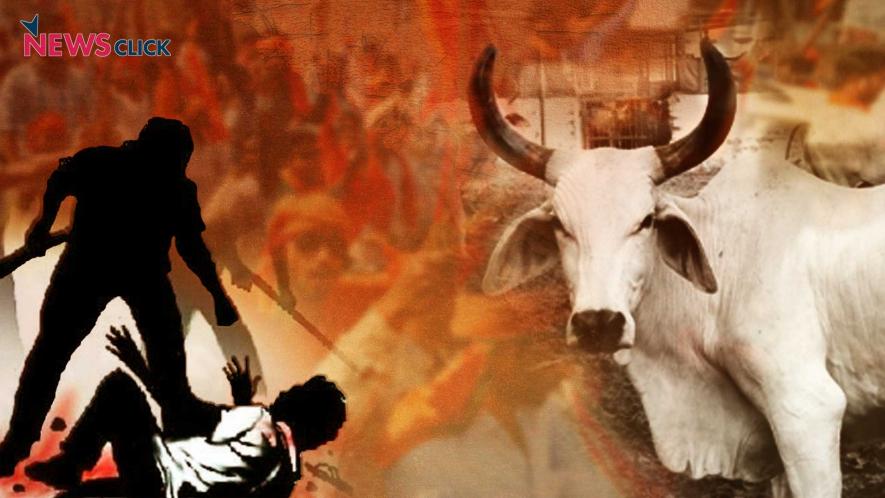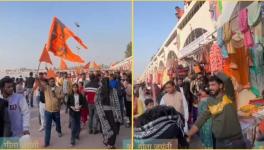Cover-up and Coercion in the Name of the “Holy Cow”

In his much publicised annual Vijay Dashmi address to the RSS cadres, Mohan Bhagwat announced that the “Gau Rakshaks have nothing to worry” and they were only doing their patriotic duty. This announcement became necessary because the observations of the Supreme Court took a stern view of cow vigilantism and the union government was subsequently forced to warn vigilante groups to curb their activities. However, Bhagwat said that “patriotic gau rakshaks” should not worry about government pronouncements. His sanction to the criminal activities shows the impunity of a supra-authority that guides the actions of the BJP cadre and its governments. This has been seen in the cases of Pehlu Khan and Junaid Khan, the victims of targeted violence by protected gau rakshaks.
PRE-MEDITATED COVERUP
Pehlu Khan was killed in an attack on April 1, 2017 by a group of 200 people armed with sticks as he was on his way home after purchasing cattle in Behror. He died two days later and in his ‘dying declaration’ claimed the six leaders of the mob that attacked him had identified themselves by name and claimed that they belonged to the Vishwa Hindu Parishad and Bajrang Dal. A recent investigation by eminent citizens shows that the cover-up operations on Pehlu Khan’s death began soon after the attack itself. The first act of coverup was that the FIR filed by the police did not include the names of the six people named by Pehlu Khan in his declaration. Further the connection between these men and the two organisations named by Khan were also not investigated further.
In fact it is telling to note that most of the gau rakshaks are in some way or the other connected with the larger Sangh Parivar. At present, VHP runs more than 450 cow shelters directly and another 1500 are run by its supporters and volunteers. Similarly the Bajrang Dal claims to be training at least three lakh of its volunteers in cow protection in different states and districts. The meaning of what it means by ‘cow protection’ is explained by the VHP’s advice to its cadre: “simply beat the cow smugglers but do not break their bones”. It also asks its cadres to enrol not VHP people in gau raksha. This explains the formation of the Bharatiya Gau Rakshak Dal boasts of 6000 full timers but disassociates itself from Sangh outfits. Another similar organisation Rashtriya Gau Rakshak Dal originated in Rajasthan and boasts of a network of 7500 activists (including 2000 women) in Rajasthan and Haryana. As Kamal didi, a leader of the Rashtriya Gau Raksha Dal states, all these organisations work in coordination with each other. Given this context, it is surprising that the police refuses to initiate investigations into the links between these organisations.
The second feature of the cover-up in the Pehlu Khan case is that the sections of the IPC invoked in the FIR are very weak. Instead of invoking non-bailable sections like attempt to murder and criminal conspiracy, the complaint only registers complaints under sections that are bailable and have maximum punishments from six months to three years. It is therefore not surprising that all the six accused were let off on bail in the early days of the hearing itself. Further if the police were to invoke non-bailable sections like Section 120B (criminal conspiracy) they would have to investigate the gau rakshak network and its intentions. These are not hard to unearth since the rakshaks have themselves being boasting of their pre-meditated plans. As many activists have told the journalists carrying out an investigative report for India Today (April 20) that they got information about trucks from their sources and that they were “trained to inflict injuries” in a manner that the victim had no external injuries to show so that no police case is made out.
Further, there have been many instances where the gau rakshaks have even got protection from police and where the police join gau rakshaks in chasing down the truck and beating the cattle traders. As a recent report of the Indiaspend website shows, more than 86 per cent of the targets in the incidents between 2015 and the present are Muslims, and almost 97 per cent of actions by gau rakshaks since 2012 have taken place after the BJP government came to power. The influence of the government in covering up cases has been seen where the original post-mortem report testifying that Pehlu Khan died with injuries was replaced by the statement of a BJP friendly Dr Sharma who works in Kailash Hospital with close connections to union minister Mahesh Sharma. Dr Sharma testified that there was no question of Pehlu Khan dying with injuries and his death occurred because of cardiac arrest two days after the attack. It is obvious that the original post-mortem report of Pehlu Khan was removed from the police records and this facilitated the bail of the six attackers named in the ‘dying declaration’ whose presence was not acknowledged in the FIR. In this sense, it is clear that in Pehlu Khan’s case the authorities played a vital role in hiding crucial evidence and weakening the case against the accused gau rakshaks.
COERCING VICTIMS
Another aspect of state interference in investigations is illustrated in the case of the Ballabhgarh lynching of Junaid Khan who was attacked on a train along with his friends in June 2017. In the trial that ensued, the judge has observed that the public prosecutor has tried to help the defence and also influence the case. Subsequently, the government argued in the trial court that Junaid Khan’s family was willing to reach an out-of-court settlement with the intervention of the panchayat. This has been denied by the father of Junaid Khan and his counsel. In fact, an alarming report in the media appeared after the court hearing. Jalaluddin, Junaid Khan’s father, gave an interview where he alleged that he was being pressurised by the sarpanch to compromise. He also informed the reporter that the surrounding panchayats had met and informed his sarpanch that lack of a compromise would affect social relations and trading linkages. However, this is not the first time that upper caste panchayats have used their strong arm tactics in this case. Even in July 2017 when the accused were arrested the Brahamin maha-panchayat in the surrounding villages were pressurising the government to weaken the case. Hence, the government’s submission that an out-of-court settlement should be made is nothing but a reflection of the views of those supporting the accused.
Both these recent cases show that the political authority of the BJP led governments and the social organisation of the Sangh organisations is being used to dilute and influence the cases against gau rakshaks. This is quite reminiscent of the cases filed after the Gujarat riots of 2002, when the Gujarat police and the government played an active role in weakening cases and destroying crucial evidence. Democratically minded people and mass movements are attempting to counter these tactics both politically and ideologically. But the intensity of the counter attacks by an alliance of democratic and secular forces has to intensify if the Hindutva brigade is to be defeated.
Disclaimer: The views expressed here are the author's personal views, and do not necessarily represent the views of Newsclick.
Get the latest reports & analysis with people's perspective on Protests, movements & deep analytical videos, discussions of the current affairs in your Telegram app. Subscribe to NewsClick's Telegram channel & get Real-Time updates on stories, as they get published on our website.























